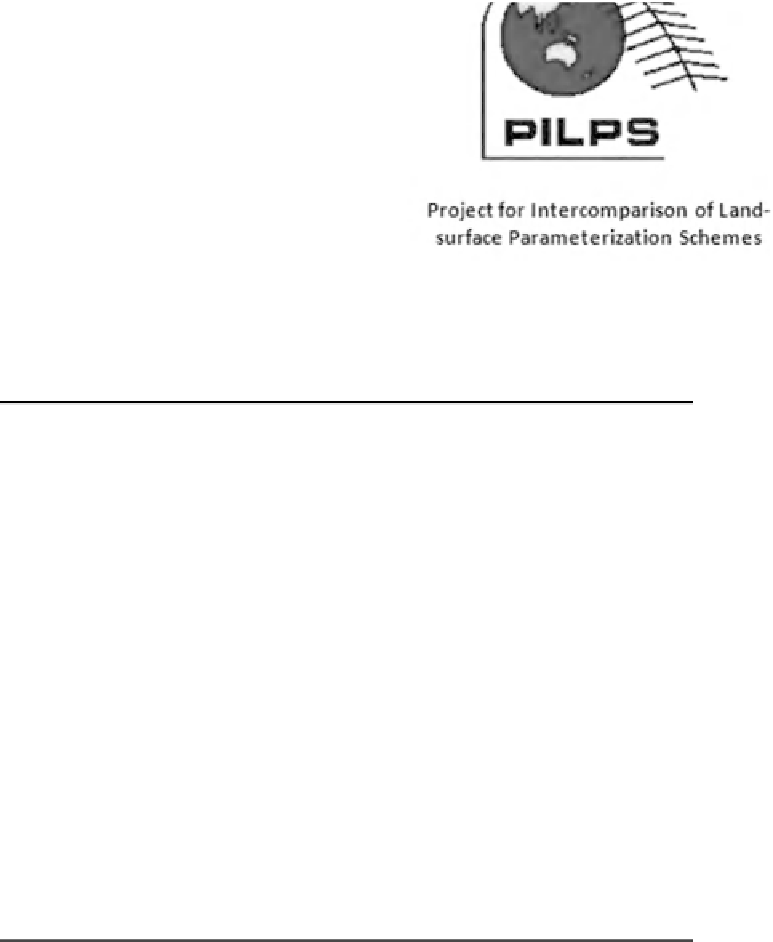Geoscience Reference
In-Depth Information
24
Soil Vegetation
Atmosphere
Transfer
Schemes
Introduction
As previously mentioned, one important way that understanding of the interaction
between land surfaces and the ABL is used is in computer sub-models that become
important sub-components of meteorological, hydrological and/or coupled
atmospheric-hydro-ecological models. These sub-models are often called 'soil
vegetation atmosphere schemes' (SVATS) or, when used in meteorological models,
'land-surface parameterization schemes' (LSPs). They are important in atmospheric
models to specify the lower boundary condition, in hydrological models to specify
the upper boundary condition, and in coupled models as the essential interface
between model components.
Again, as previously mentioned, the availability of frequently sampled weather
variables from which SVATS can calculate surface exchanges is not usually an issue
because, in the case of meteorological models and coupled surface-atmosphere
models, the required variables are themselves regularly calculated by the remain-
der of the model and, in the case of hydrological models, the use of SVATS would
likely not be attempted unless the required data are available from measurements,
perhaps made with one or more automatic weather stations.
Basis and origin of land-surface sub-models
Putting aside for the moment the important indirect influence of terrestrial
vegetation on the concentration of atmospheric CO
2
, continental surfaces
influence the atmosphere in two main ways, (i) via the surface energy balance and
(ii) through the efficiency with which momentum is transferred to the ground
from the moving air. In the case of the surface energy balance, this influence is
exerted both through land surface characteristics that control the net capture of





